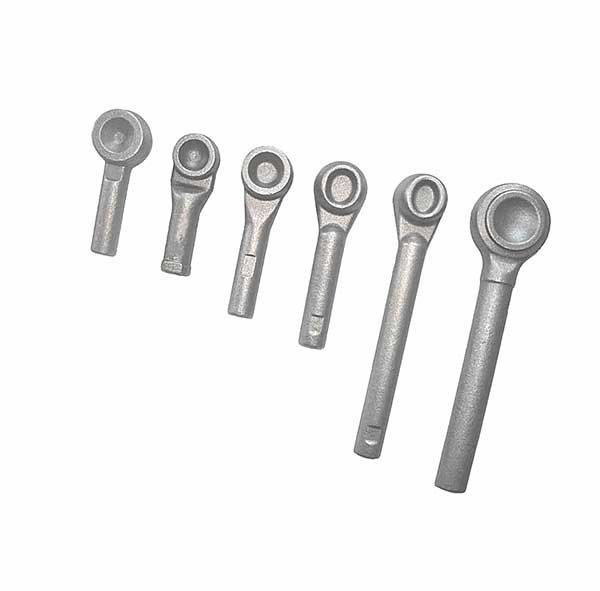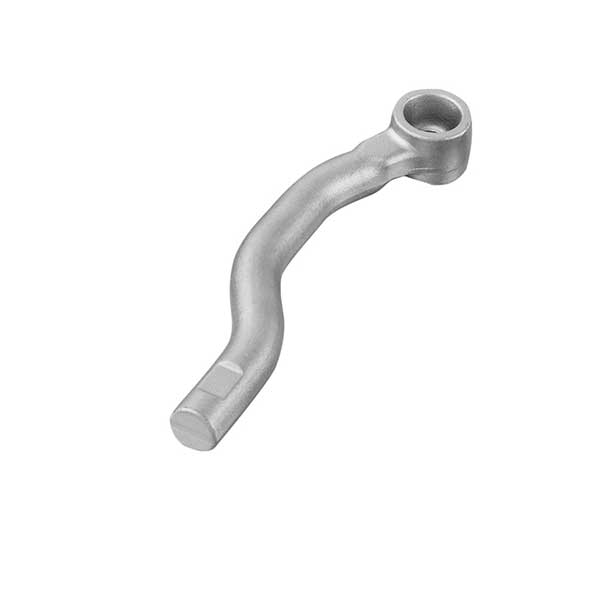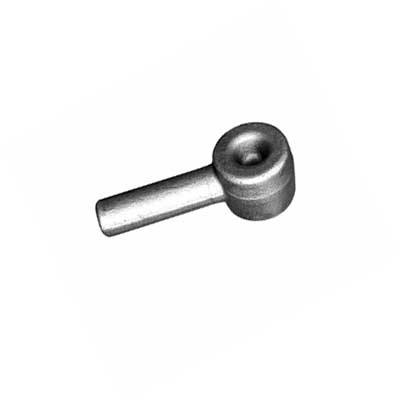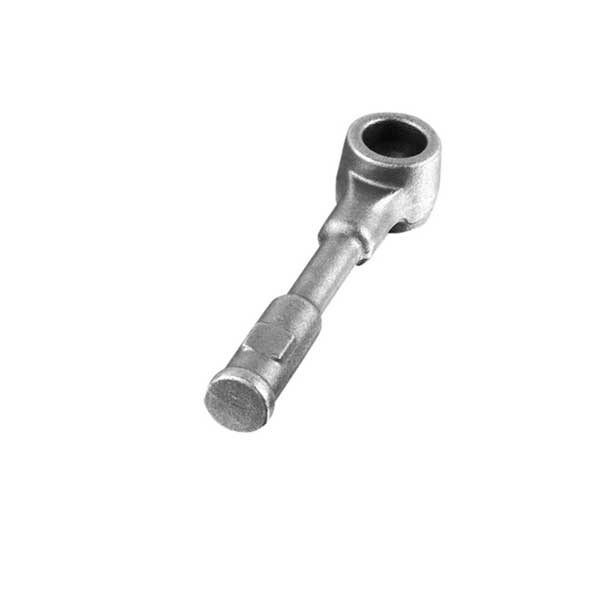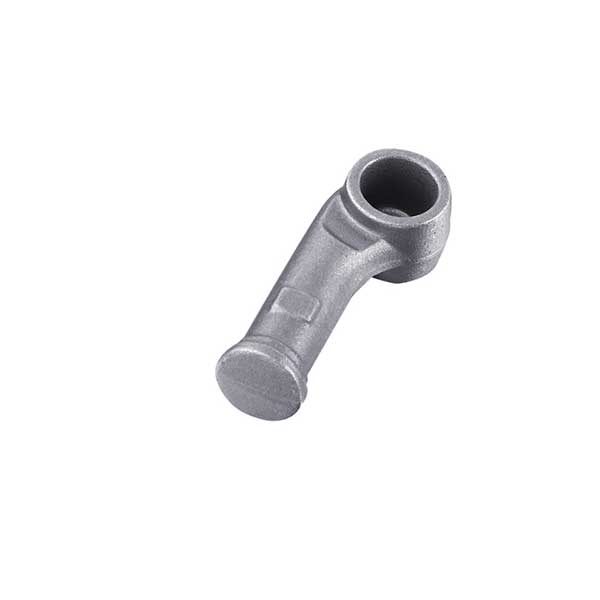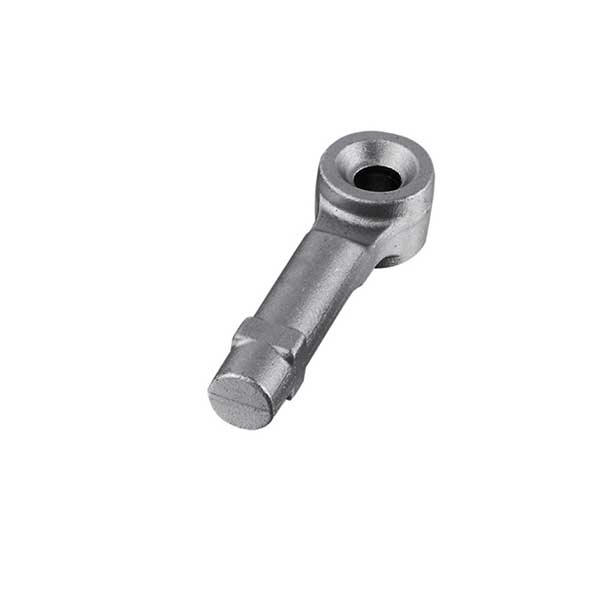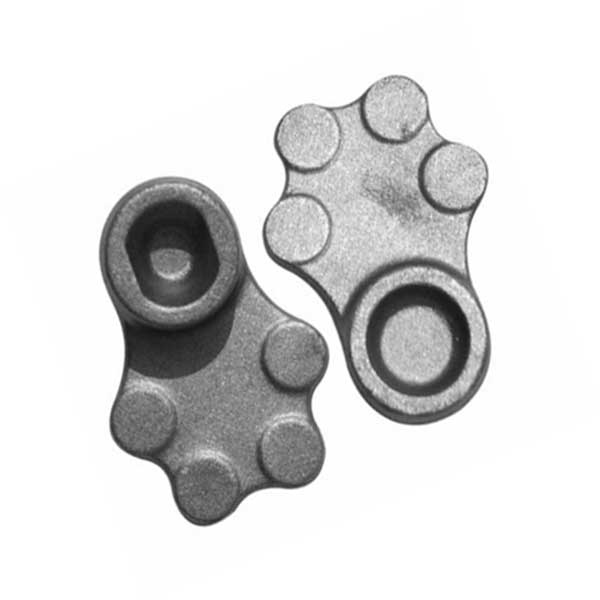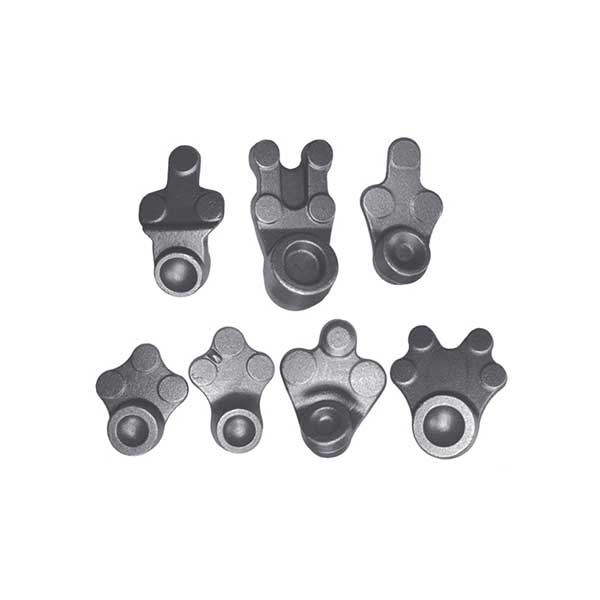The forming of die forging ball head forgings generally includes three types of steps, namely die forging steps (including pre-forging and final forging), and blanking steps (including upsetting, drawing, rolling, clamping, forming). , bending, etc.), cutting trimming steps (including cutting, trimming, punching, correction, coining, etc.).
The pre-forging step is to further deform the blank after the blanking to ensure the forging of the die-forged ball-end seat when the final forging is full, without folding, cracking or other defects; at the same time, it helps to reduce the wear of the final forging die and improve Die life. The final forging step is used to complete the final forming of the forging. Therefore, when the shape of the forging is complicated, the forming is difficult, and the production batch is large, the pre-forging is generally adopted, and then the final forging is performed.
The blanking step is mainly determined according to the shape and size of the forging. Die forging ball head forging die forgings can be divided into two categories according to their different shapes: one is a round cake (or disk) die forging, which is characterized by a circular or length close to the width on the parting surface. Forgings, such as gears, flanges, etc.; the other type is long-axis die forgings, which are characterized by a large difference in projection length and width on the parting surface, such as step shaft, crankshaft, connecting rod, bending rocker Wait.
(1) Billet for round cake forgings
Round cake forgings generally use upset blanks, and more complex shapes are formed by forming upset blanks.
(2) Billet for long shaft forgings
Long-axis forgings include straight-axis forgings, bending-axis forgings, long shafts with branches and knives, and the like. Due to the need for forming shape, the blank of the long-axis forging is composed of a blanking step of drawing, rolling, bending, pressing, forming, and the like.
1 Straight-axis forgings A relatively simple forging, generally requires lengthening, rolling, clamping, forming and forming steps, etc., to ensure that forgings are obtained during final forging.
2 Bending axis forgings The deformation process of this forging may be the same as the former, but a bending step must be added.
3 Long shaft parts with shoot buds The deformation process used for this forging is roughly the same as the previous one, but there must be a forming blanking step.
4 Fork parts The deformation process of the forgings, in addition to the first three characteristics, may be bent or stepped to achieve the purpose of the fork forming.
The long-axis forging blanking step is based on the variation of the axial cross-sectional area of the forging, and is determined in order to make the distribution of the metal material before the final forging conform to the requirements of the forging. According to the metal flow efficiency, the priority of the blanking step is: lengthening, rolling and clamping. In order to obtain a curved, budded or forked forging, a bending or forming step is also used.
The complete process of die forging ball head forgings should be: blanking, blank quality inspection, heating, blanking, pre-forging, final forging, cutting, punching, surface cleaning, calibration, precision, heat treatment, inspection, storage .
Professional closed die forging factory business and services
Henan gold emperor industrial technology co., LTD. Main business is industrial parts, auto parts design product design production, other mechanical parts design and manufacture, r&d and production of titanium alloy materials and its products, tungsten alloy, molybdenum alloy products research and development production, the company has a complete mechanical parts design form a complete set of production technology process, is a professional mechanical parts suppliers.
The factory is well equipped to produce products from 0.1kg to 200kg.The factory is equipped with 30 machining centers, which can guarantee the subsequent machining process of batch products.We can produce many kinds of products: carbon steel forgings, alloy steel forgings, copper forgings, aluminum forgings, stainless steel forgings, titanium alloy forgings, tungsten molybdenum alloy forgings, etc.Our products are mainly used in automobile industry, engineering machinery industry, railway locomotive industry, electric power industry, petrochemical industry, mining machinery and other industries.
The quality control equipment of the company includes flaw detector, hardness tester, spectrometer, metallographic analysis, impact testing machine, tensile test, coordinate measuring instrument, etc., which can effectively control the quality of each product.The company is engaged in industrial parts product design and production for 20 years, has accumulated rich industry experience, has many senior technical engineers.The company undertakes customized OEM services for processing of incoming drawings and samples, and can complete all processes including 3d modeling design, mold design and production, product forging and pressing, heat treatment of forgings, and machining.Our company has set up an independent industrial design service center, has a professional industrial design service team, can provide customers with professional product technical services.

